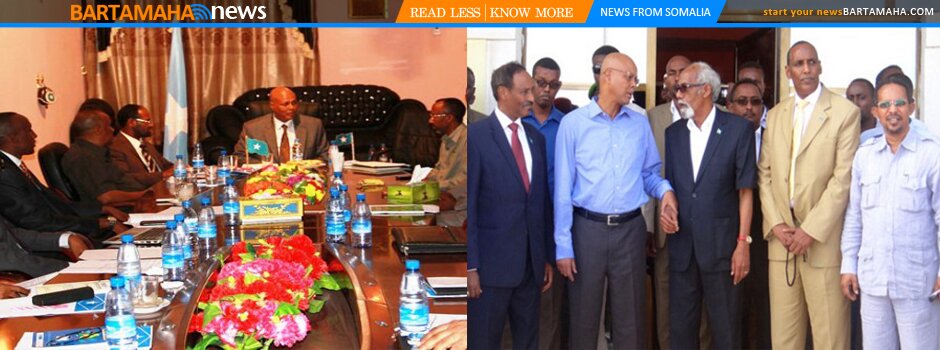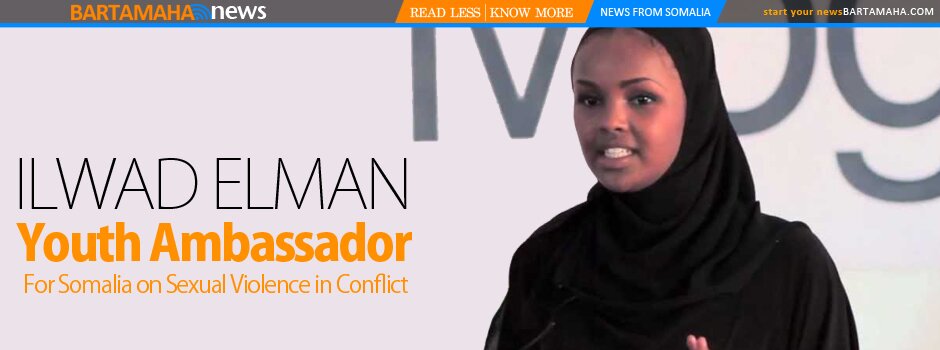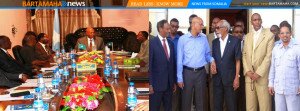UPDF faces al Qaeda threat in Somalia
FOR 13-year-old Mohamed Ismaeli, the Ugandan nurse of the African Union peacekeeping force, must seem like an angel in the midst of Mogadishu’s madness. She carefully bandages the stump that remains of his left leg after a bullet hit him on the way from school.
His friend, Abdukadir, died in the cross-fire between the Somali government forces and Islamist insurgents, known as al Shabaab.
Despite being in great pain, Mohamed smiles at the Ugandan woman who cares for him like a mother, in a place where for the first time in his life he feels safe.
His house in Karan, in the northern part of the city, was hit by mortars twice in the last few months, he narrates, killing two of his sisters and three of his brothers.
Mohamed is only one out of over 2,000 war-wounded the Ugandan medical team pulled through in the last two years.
“When there is fighting, we get very many cases,†says Dr. Joseph Asea, the force medical officer. “We can have up to 50 to 70 patients in one day, mostly with gunshot wounds.â€
Largely ignored by the rest of the world, the 2,700 Ugandan peacekeepers are doing more than saving lives in the world’s most smashed-up capital.
They have also protected the Somali government and key institutions like the port, the airport and state house, and trained the new Somali army and Police.
All observers now agree that without AMISOM, as the African Union mission is dubbed, there would be no government in Somalia.
Al Shabaab
With a minimum of funding, equipment and soldiers, the three Ugandan battalions have kept at bay one of the most feared terrorist groups currently operating in Africa.
Al Shabaab, the youth wing of the Islamic Courts, are a product of the lawlessness and extreme violence that have gripped the strategic country at the Indian Ocean for the last two decades.
An entire generation, those born after 1990, has never known a functional government or a society with a constitution and a rule of law.
Denied an education, cut off from the outside world, overcome by a sense of injustice, despair and anger, these redundant Muslim youth were easy prey for al Qaeda.
First lured by money, then brainwashed through jihadist lectures and sermons, they were found eager to give their life the meaning it never had: the ultimate sacrifice for Islam.
Their actions, ranging from hijacking ships and kidnapping foreigners to suicide bombings and beheading suspected collaborators with Western organisations, may shock the outside world.
To insiders, they are only the symptoms of a larger problem: the lack of a central government capable of restoring law and order after dictator Siad Barre was ousted in January 1991.
International politics
Al Shabaab are also a product of cynical international politics and misjudged foreign interventions.
The tens of thousands of guns that fell into the hands of the civilian population in 1990, and sucked the country into a spiral of violence, had been supplied by Russia and the United States of America during the Cold War.
Later, Somalis were to pay the price for the 1993 downing of an American helicopter and the killing of 18 US soldiers – which had been a revenge action for the US killing of dozens of clan-elders who had gathered for peace talks.
For over a decade, Somalia was abandoned and left to decay. Until in early 2006 the CIA paid the Mogadishu warlords to arrest the sheikhs, which they suspected of having links with al Qaeda, and hand them over to Ethiopia.
The move backfired. The rise of the Islamic Courts was swift. They took control of the capital in June 2006 and fanned out across central Somalia, installing courts and securing strategic roads, bridges and airstrips.
The moderate wing of the Islamic Courts, led by Sharif Ahmed, wanted to impose law and order, restore public services and revitalise the economy.
The radical wing, led by Sheikh Aweys, was working towards the establishment of an Islamic emirate of Somalia, taking in Somali-populated areas of Ethiopia and Kenya.
Instead of supporting the moderate wing and isolating the radicals, the US backed an Ethiopian military intervention, which ousted the Islamic Courts in December 2006.
Again, the move backfired. The presence of Ethiopian troops, particularly their relentless shelling of the capital, infuriated residents and radicalised the youth.
“With every mortar launched, another al Qaeda fighter was created,†is how one observer put it.
Two years after being ousted and forced into exile, Sharif Ahmed, the moderate leader of the Islamic Courts, came back to power.
This time he was elected by an enlarged parliament, which included the Islamic Courts, sitting in neighbouring Djibouti.
But as MPs were electing their new leader, al Shabaab had already seized the southern town of Baidoa.
And before the president could form a government and rebuild his own forces, they had taken over most of southern and central Somalia.
Earlier this month, they had come up to half a kilometer from the presidential palace but were repulsed and badly beaten by a joint Somali-Ugandan offensive.
Global jihad
President Sharif Ahmed acknowledges that his Islamic Courts, especially the youth wing, have been hijacked by global jihad (holy war) forces.
“While we were out in exile, elements and top leaders of al Qaeda came here,†he told The New Vision in an interview on Thursday. “Previously, we had some elements of al Qaeda but they were dormant. While we were away, they took advantage and brainwashed a lot of young people. Now they pose a threat not only to Somalia but to the region as a whole.â€
After the withdrawal of the Ethiopians and the introduction of Sharia, al Shabaab has no political agenda left, he stressed.
“They just want to control Somalia and hand it over to global terrorists. Their only project is slaughtering people.â€
The Somali president estimates the number of foreign fighters in their ranks at over 2,000 – nationals from Pakistan and Afghanistan but also Somalis from the diaspora who were recruited through videos on jihadist websites.
Asked who their commanders are, he named Ahmed Abdi Godane, a Somali and al-Qaeda graduate from Afghanistan, as the leader of the internal al Shabaab forces.
Godane, in a recorded message aired on Somali radio-stations earlier this year, vowed to fight on “until Islamic Sharia is implemented in all continents in the world and until Muslims liberate Jerusalemâ€.
He also issued a warning to the Somali media. “It is your duty to take part in the current jihad,†he said in his audio message.
“Do not misrepresent the facts, don’t mislead the people.â€
A Pakistani General by the name of Hajir is in charge of the Somalis from the diaspora, according to President Ahmed.
He further named Abu Yahya al-Libi as the man assigned by al Qaeda to supervise the Somali operations.
Al-Libi is not a stranger to US intelligence services. A Libyan national, he escaped from the American detention centre in Bagram, Afghanistan, in 2005 and has emerged as al Qaeda’s theological hardliner.
As Jarret Barchman, a former analyst of the CIA, describes him on the internet: “He’s a warrior. He’s a poet. He’s a scholar. He’s a pundit. He’s a military commander. And he’s a very charismatic, young, brash rising star within Al-Qaeda, and I think he has become the heir apparent to Osama bin Laden in terms of taking over the entire global jihadist movement.â€
Lack of troops
Only 4,300 Ugandan and Burundian soldiers stand in the way of al Qaeda’s ambition to take over Somalia, and establish a base and training ground for international terrorism in East Africa.
Considering the threat posed to the region and the world, the funding, troops and equipment of AMISOM are grossly inadequate.
The Brussels Conference in April pledged $253m for Somalia, of which $35m goes to the government to train and pay a security force of 6,000.
This leaves $218m for the AU operation.
In comparison, the UN operation in the DR Congo has a budget of $1.2b for one year, while the UN mission in Darfur has a budget of $1.5b.
And while 18,000 troops were found for Congo and 16,000 for Sudan, neither Africa nor the UN seem able or willing to raise the 8,000 troops required to stabilise Mogadishu.
The lack of capacity to secure a larger area was the biggest frustration for outgoing force commander Gen. Francis Okello.
“We are here on a mission, we were given certain tasks. We cannot fulfil that task unless we have the means,†he said at a press conference in front of his headquarters.
“We need soldiers on the ground. If we had a larger number, we would have secured a larger area. Apart from that, we need equipment. To remove the many threats we are facing – roadside bombs, mines, mortar fire -, we need better protection. We also need more capacity, more patrol boats, more APCs.â€
His spokesperson, Maj. Barigye Ba-Hoku, was less tactful. “We are worried,†he said, “about the inertia of Africa to solve its own problems.â€
Source: newvision.co.ug
By Els De Temmerman
in Mogadishu
Comments
comments
 Calendar
Calendar






































